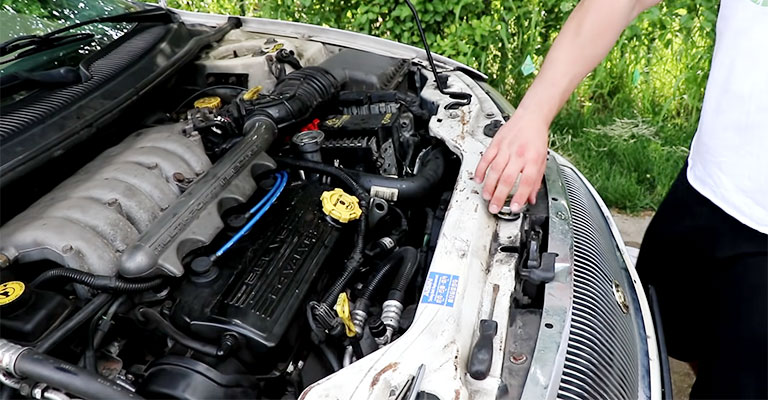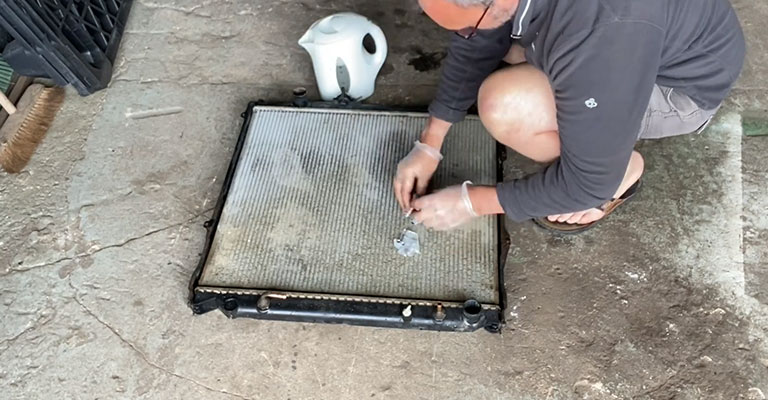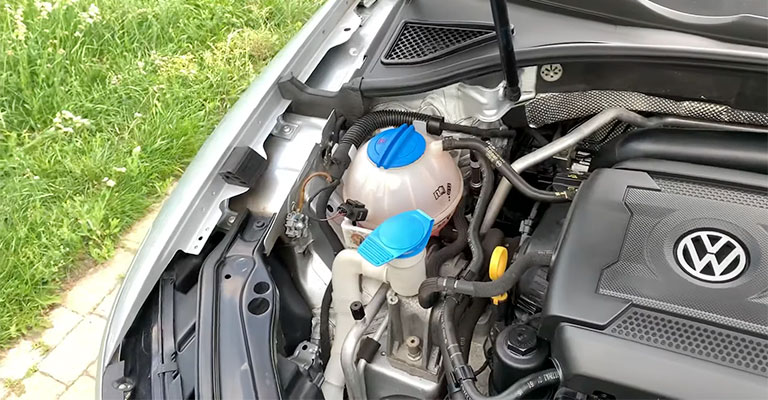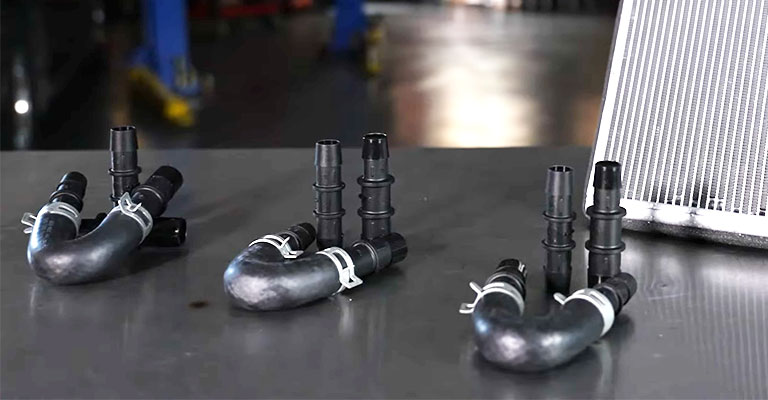When you turn on your heater, the coolant now flows through the heater core, which should, in turn, cool down your engine. However, if it’s doing the opposite, there’s a serious problem with your car’s cooling system.
Why is my car overheating when the heater is on? It’s probably because the heater is plugged with dirt or debris. When it gets plugged or clogged, the coolant flow is restricted, causing your engine to overheat. Besides, your cooling system may not be working properly due to issues like low coolant levels, a broken fan, or a clogged-up radiator.
A faulty pump, a bad thermostat, or possibly a bad heater core bypass valve could also be causing the problem. But if the cooling system components are fine, a clogged heater core is what you need to resolve. Keep on reading since there is more coming up your way.

How Does The Cooling System Work?
To understand how certain failed components lead to overheating, it is crucial to first understand how the cooling system functions. The engine is kept cool by the coolant flowing through the engine block and removing heat.
The heater core is then heated as the hot coolant passes through it. The air that has just passed through the core is now blowing into the cabin as hot air. The coolant then flows through the radiator dispersing its heat into the air and cooling the liquid down.
A fan blows air into the radiator, increasing the rate at which the coolant inside the radiator decreases in temperature. The pump makes sure that the coolant is flowing through every component, repeating the process and cooling down the engine.
As the heater core draws away more heat from the coolant, when you turn on the heater, the engine should further cool down. But if it does not, you have a problem with one of the components responsible for cooling down your engine.
Why Does Turning the Heater On Cause Car to Overheat?

Turning the heater on to cool down the engine may sound counterintuitive. But according to automobile expert Richard Reina, you should turn on the heater as it helps keep the engine cool. A heater core draws away the engine’s warmth into the passenger cabin, reducing the burden on the vehicle’s cooling system.
But it can cause overheating if it’s blocked due to dirt and grime, which restricts the flow of coolant. Flushing air or water through the heater core can clean a clogged heater. The dirt and buildup will come out via the inlet hose. Now using an air compressor or a water hose you can push out all the clogs causing the engine to overheat to get rid of it.
Why Is My Car Overheating When The Heater Is On? Cooling System Issues
If the heater core is not clogged, problems may be with other components in the cooling system. Now we will look into details as to which components may not be working properly and cause your car to overheat.
A Clogged-Up Radiator

The quantity of heat the engine generates causes the cooling system to produce significant amounts of pressure. Even a severely clogged radiator can have coolant flow through it thanks to this immense pressure.
However, when the heater core is turned on, the coolant now flows only through the heater core valve as its the least difficult route.
As a result, you get extremely hot air flowing inside your cabin. On the other hand, the coolant now cannot cool down by flowing through the radiator and dispersing its heat. As a result, the coolant is now no longer able to draw heat out from the engine, so you are left with an overheating car.
Not Enough Coolant

An engine might overheat from not having adequate coolant. Low coolant levels indicate that there is insufficient liquid to effectively absorb the heat produced by the engine. Running with low coolant levels might also cause air to enter your cooling system.
When this happens, the air inside the cooling system becomes trapped at a high point and is unable to leave until the entire system is bled. This implies that the coolant cannot circulate through every area of your cooling system, even if you refill it. Your engine overheats as a result.
Malfunctioning Thermostat
A thermostat is a temperature-controlled valve then regulates how much coolant flows through the engine to the radiator. A malfunctioning valve means that it might not let enough coolant through to cool down the engine when your engine is running hot.
The thermostat is also known to get stuck halfway, meaning that the coolant cannot flow through properly. And bad circulation will result in overheating.
A Bad Heater Core Bypass Valve

After turning the heater on, if you feel cold air blowing into the cabin and subsequently notice that the engine’s overheating, there’s a problem; the problem may be a bad heater core bypass valve. There’s no hot air, as the coolant cannot pass through the heater core.
This also means that the flow of coolant is disrupted, thus unable to cool down the hot liquid which just passed through the engine.
A Non-Functional Fan
The fan in front of the radiator sucks in air from the front and blows through the radiator and into the engine. It blows away the hot air around the radiator with new cold air, thus cooling down the liquid, which in turn cools down the engine.
If the fan does not work, the coolant inside the radiator won’t cool down fast enough, which will overheat the engine.

Leave a Reply